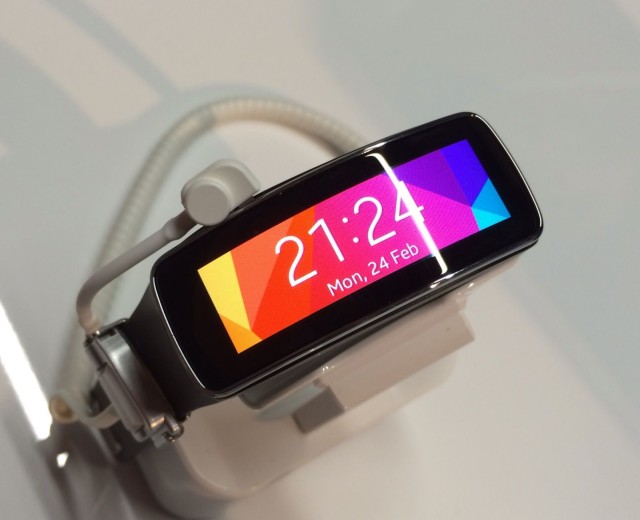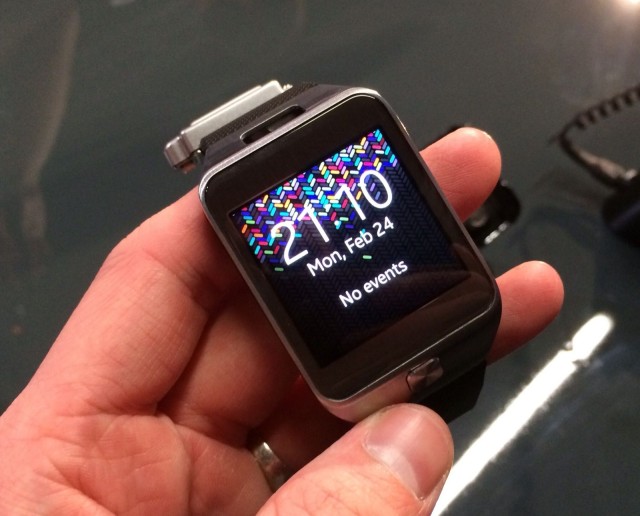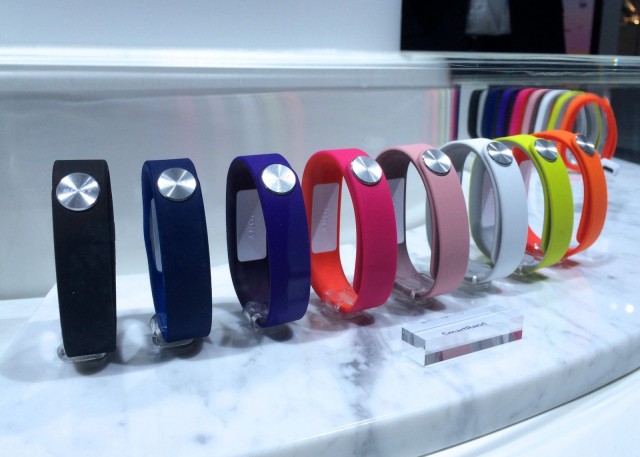Smartphones Stole The Show Again At MWC, But Wearables Won’t Be Ignored [MWC 2014]
Going into Mobile World Congress this year, the one device everyone was waiting to see was Samsung’s new Galaxy S5. We knew it was coming — the South Korean company made that pretty clear with all of its teasers beforehand — and we couldn’t wait to see what the 2014 flagship would bring.
The Galaxy S5 wasn’t the only smartphone on show that was worth getting excited about, either. Sony brought its new Xperia Z2, HTC unveiled the impressive midrange Desire 816, there were some nice new additions from LG and ZTE, and of course, we also saw the first Android-powered handsets from Nokia.
Smartphones certainly stole the show for another year, then, but there was another product category we couldn’t help but take note of. No, I’m not talking about tablets — which were just as disappointing this year as they were in 2013; I’m talking about wearables.
Samsung not only had the most interesting smartphone on show in Barcelona, but also the most interesting wristwear, too. In addition to its second-generation Galaxy Gear, the company announced the Galaxy Gear 2 Neo, and the impressive Galaxy Gear Fit health tracker.
The Galaxy Gear 2 turned out to be exactly what we were expecting. It’s a lot like its predecessor, but it brings a number of nice refinements that make it a very compelling upgrade. It’s slightly lighter at 68 grams, it now has a home button and a built-in infrared blaster, and it has a bigger battery that’ll last “two to three days.”
Samsung also moved the Galaxy Gear’s camera to its bezel to give users the ability to swap straps, and swapped its Android-based operating system for a Tizen one that brings support for even more Samsung smartphones.
The Galaxy Gear 2 Neo is essentially the same as the regular Gear 2, only it doesn’t have a camera, and it’s even lighter at 55 grams. It is also likely to be cheaper, so it could be a better choice for the many who don’t see a need for a camera in a smartwatch.
The Galaxy Gear Fit is arguably the most impressive of the three. Not only will it tell you the time, but it’s also a health and fitness tracker, so you can use it to monitor your heart rate and track your workouts. It’s much lighter than its siblings, and its curved OLED display means it should be more comfortable on your wrist.
The Galaxy Gear Fit won MWC’s Best Mobile Device award.
The Gear Fit will compete with devices like the Fitbit Flex and the Sony SmartBand — which were also on show at MWC — and the Nike FuelBand. And although we were only able to play around with it briefly during Samsung’s event, it seems the Gear Fit will be more useful than all of them.
In fact, the Gear Fit just became the first wearable to win MWC’s Best Mobile Device award.
Though you may not have heard much about it (mostly thanks to Samsung), we also saw a new smartwatch from Chinese manufacturer Huawei in Barcelona. Called the TalkBand B1, the unique device is another fitness tracker that turns into a Bluetooth headset when pulled out of its strap, and it’ll cost just €99 ($137).
While smartphones, tablets, and the odd notebook made up most of the stands on the show floor at MWC, then, some of the most interesting — and most popular — were those carrying new wearables. The excitement over Samsung’s new Galaxy Gears, particularly the Gear Fit, seemed to far outweigh the enthusiasm for its Galaxy S5 by the end of the week.
This trend started at the Consumer Electronics Show in Las Vegas last month, when devices like the Pebble Steele, fitness trackers from LG and Sony, and smart glasses from companies like GlassUp made us sit up and recognize the new focus on wearable technology from some of the biggest names in the industry.
And it’s going to continue throughout 2014, with new smartwatches expected from LG, Google, and even Apple. It’s an exciting time to be a fan of wearable tech, then. It’s only going to get bigger and better from here on out.





